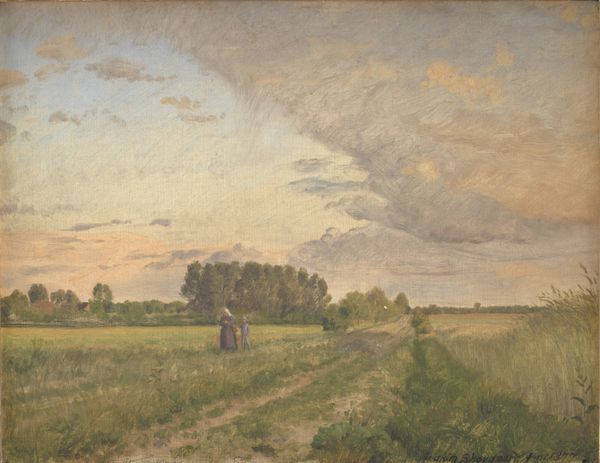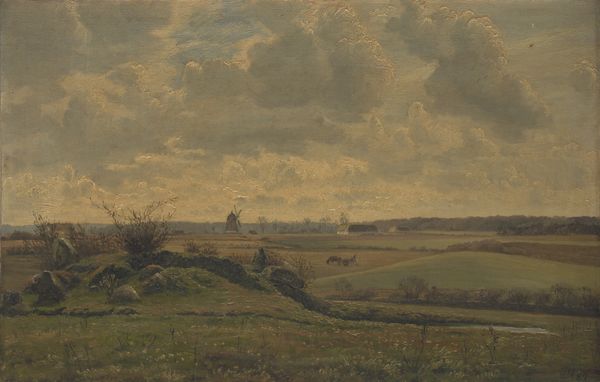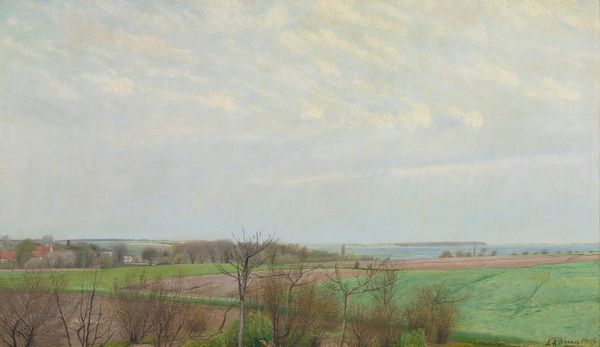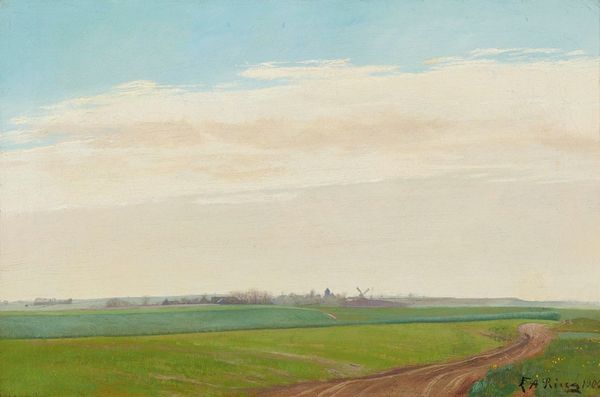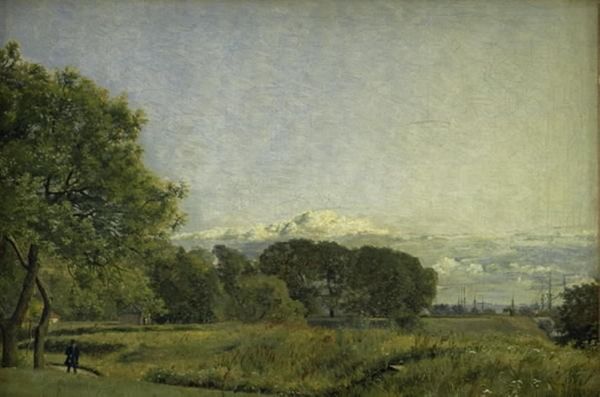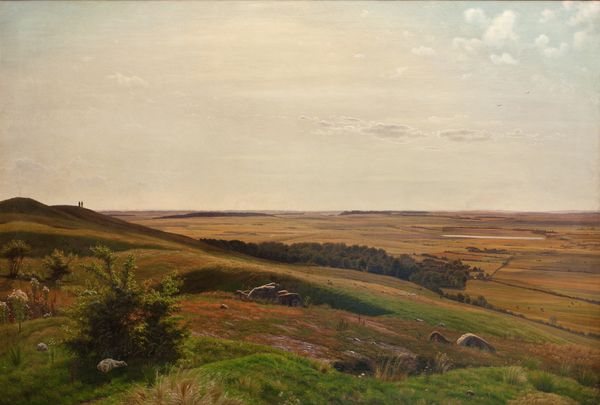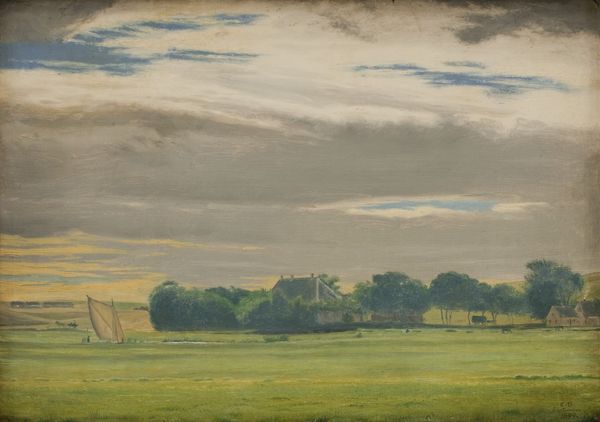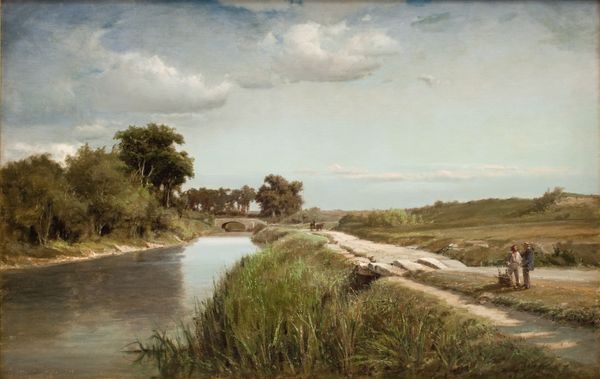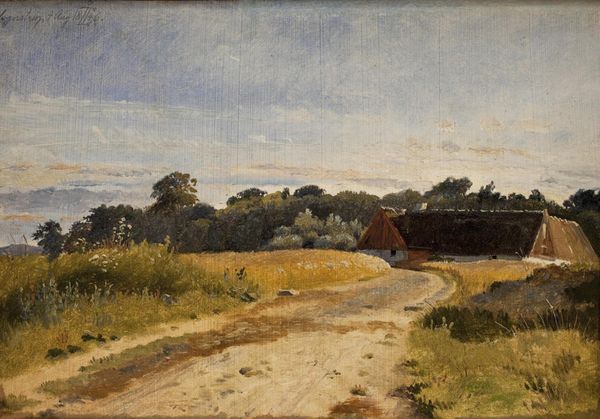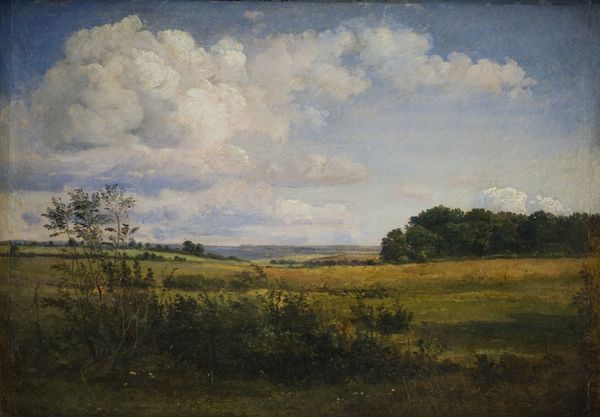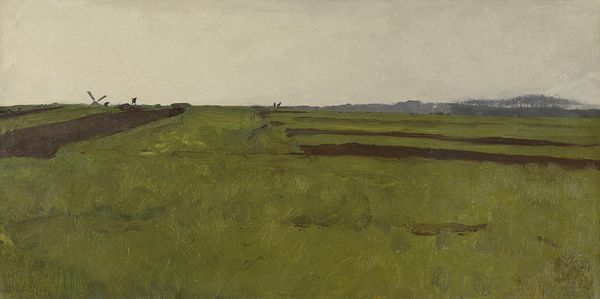
Dimensions: 31.5 cm (height) x 45 cm (width) (Netto)
Curator: Here we have Vilhelm Kyhn's "Marklandskab med en bro," painted in 1858. The piece is an oil on canvas and a beautiful example of plein-air painting. Editor: Immediately, the overwhelming tranquility is apparent. The delicate handling of light, especially in the sky, instills a sense of peace. Curator: Absolutely. Notice the horizon line placed relatively high in the composition; Kyhn gives dominance to the landscape itself. It really is a masterclass in capturing the specific qualities of the Danish countryside in the mid-19th century. The structure is fairly conventional, employing the bridge as a strong horizontal element that leads our eye into the distance. Editor: While I agree that the structure guides us in, the landscape in itself tells a powerful story of land use, wealth, and societal change. Kyhn painted during a time of intense agricultural reform, which radically altered the Danish landscape. What does a "peaceful" scene mean when the social context shows inequality? Curator: It's impossible, I think, to deny the inherent aesthetic qualities achieved by the painting; observe, if you will, how Kyhn articulates an image that moves seamlessly between realism and romanticism to depict nature with feeling and respect. Look how he captures light falling across the fields, a technique perfected by observation and translated into artistic expression. The bridge is also such a wonderful symbolic element, both functional and artistically essential. Editor: Functionally, a means of passage, but consider who controls that passage and who benefits. There’s something undeniably beautiful in the handling of the light, but I am most drawn to the relationship between nature, property, and ownership as communicated here. What labor has gone into cultivating these fields? Where are the workers themselves represented in the pastoral scenes? Curator: Well, the painting offers a respite from urban life; instead of focusing on those hard socio-political aspects you address, let it be seen more like a love letter to a country one adores and cherishes and wants to remember forever. Editor: True, but such sentiment obscures an often brutal social reality. I feel my interpretation gives me another valuable set of readings. Curator: In this beautiful meeting of divergent points of view, it feels we’ve created our own little bridge, so to speak. Editor: Yes, it is that exchange between a formal appreciation and a grounded reality that brings history alive in unexpected ways.
Comments
No comments
Be the first to comment and join the conversation on the ultimate creative platform.
